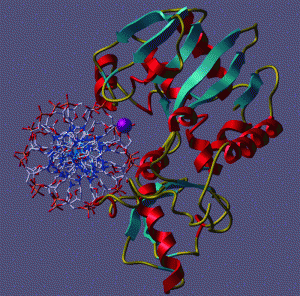The atom is the basic unit of matter.
Atoms bond to one another to form compounds.
Bonds are formed by the sharing or transfer of electrons present in the atoms.
Bonds between Atoms: Chemical Bonds
Covalent compounds
– formed by the EQUAL sharing of electrons between atoms
– electrically neutral molecules (no “+” or “-“ charges)
– strong bond
– held together by the sharing of molecules
Ionic compounds
– formed by the transfer of electron(s) from one atom to another
– electrically charged; one molecule is + charged and the other is – charged
– strong bond
– electrostatic forces hold the atoms together
Polar covalent compounds
– formed by the UNEQUAL sharing of electrons
– areas of these compounds have small electrical charges
– strong bond
– held together by the sharing of molecules
Organic molecules are any compounds that contain carbon (CO2 is the exception)
Carbon is important to living systems because it forms strong, stable covalent bonds.
Bonds between Molecules: Physical Bonds
Hydrogen Bonds
– occur between the polar molecules with other polar molecules
– weak forces
– the effect of billions of bonds result in an attractive force that is quite strong
Hydrophobic Interactions
– occur because polar molecules exclude covalent molecules from mixing with them
– causes covalent molecules to associate with each other
– weak forces
Water
Life as we know it on Earth could not exist without water.
– water is a polar covalent molecule
– forms hydrogen bonds with itself and other polar covalent molecules
Water …
1. … is cohesive.
– water molecules tend to stick together
2. … has a high specific heat.
– a large amount of heat energy is required to produce a change in the
temperature of water and it tends to retain that heat
3. … in it’s solid form (ice) is less dense than liquid water.
4. … is a very good solvent.
– many chemicals readily dissolve in water
